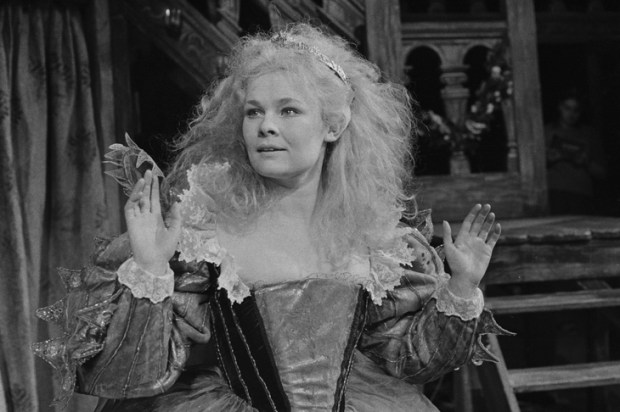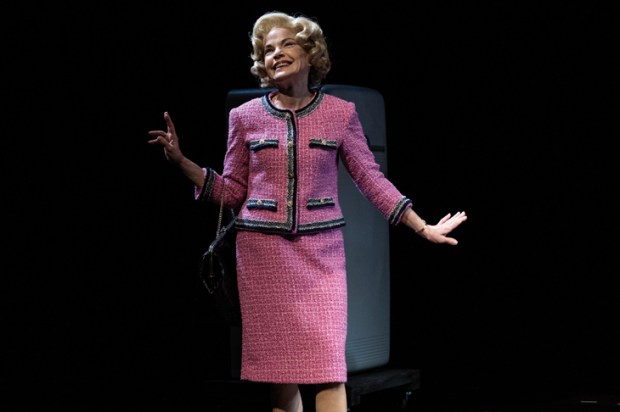Isn’t it strange the way the popular and high art aspects of our culture keep connecting and intersecting. A friend of mine with French to die for – she can interview Catherine Deneuve, she could interview Jeanne Moreau – put on her phone the actors of the Comédie-Française reading the whole of Proust in French but also that irresistible trash story The Three Musketeers.
Thackeray was the author of Vanity Fair, the history of the rise of that wicked woman Becky Sharp, and it is a dazzling acerbic work of art. Yet, when Thackeray got his hands on Dumas’ The Count of Monte Cristo (which appeared in 1844 and was translated into English the following year) he literally couldn’t stop reading it.
Now there’s a new French film of it and you will remember the story deep in your bones from whatever version of it touched you as a child, whether as a classic comic or a movie or whatever. The new French film has Pierre Niney as Edmond Dantes the man who’s imprisoned quite wrongly in a dreadful chateau but after fourteen years of captivity escapes and proceeds to find the treasure he knows is his to find. And so he becomes the Count of Monte Cristo and makes it his business to wreak revenge on those who have treated him so cruelly.
It’s a Gallic Batman après la lettre.
The Count of Monte Cristo is the sort of flawlessly articulated yarn that gives popular novelising a good name. No one ever had such an effortless command of the populaire as Dumas and part of the effect of his magic is his absolute sense of glamour and his fearlessness in the face of the risk of vulgarity.
He is the Homer of trash and he must have given as much pleasure as any author who ever lived. It’s terrific that there’s a new elegant and energised film to do homage to the glint and swordplay of Dumas’ sense of invention. Its script and direction are by Matthieu Delaporte and Alexandre de La Patellière.
Then there’s a spectacular live version of another French classic which we will know forever from its abbreviation. Victor Hugo’s Les Misérables (or as the world knows it along with the iconic poster design Les Mis) famously staged by Trevor Nunn. It appeared in France in 1862 and in England that same year.
Some decades ago in 2008 Les Misérables was translated in a handsome hardback by Julie Rose into a spacious, rather jazzy, modern English. The very talented Australian gave Hugo’s sonorous Victorian prose an airport fiction accessibility. When Julie Rose did the subtitles for a rather languidly tasteful production of a Comédie-Française production of Molière – from memory Le Bourgeois gentilhomme – whenever someone said, with a dying fall, ‘Mon Dieu,’ Julie’s surtitle read ‘Jesus H Christ’.
Les Mis is the story of the honourable and woebegone Jean Valjean who steals a loaf of bread to feed his starving family and is pursued ever after by the police inspector Javert who has an implacable desire to see him behind bars again. Les Misérables is the grandmother of all fugitive stories. The musical is on for 15 performances each at Sydney’s ICC theatre from 30 April and at Melbourne’s Rod Laver Arena from 14 May.
Alfie Boe and Killain Donnelly are doubling as Jean Valjean and the two Javerts are Bradley Jaden and Michael Ball.
Michael Ball is an especially distinguished musical theatre performer and is the finest Sweeney Todd on record (with Imelda Staunton).
Then there’s Matt Lucas who should be a scream as Monsieur Thénardier. His other half is Marina Prior who doubled with José Carreras many years ago.
Film is to be made the text for a stage show of Dr Strangelove with Steve Coogan taking on the medley of roles Peter Sellers played with such extraordinary skill in the 1964 film by Stanley Kubrick. It’s worth remembering that Coogan can keep up with colleague Rob Brydon in his command of whatever accent he’s after – from Michael Caine to Roger Moore – and this should stand him in good stead. It’s pleasing to see the astute people of Sharmill are presenting it as an NT Live broadcast.
The Narrow Road to the Deep North hit our devices for viewing well in time for Anzac Day (it started on 18 April). This is the adaptation of the – loosely – Weary Dunlop novel by Richard Flanagan. You don’t have to be a Richard Flanagan fan to be fascinated because the director of this version is Justin Kurzel who made Nitram and is certainly one of the greatest directors we have ever produced.
The book, it should be admitted, mesmerised every kind of reader. Another friend of mine, a devotee of Proust was gripped by it and Tony Abbott insisted – despite the author’s watermelon green politics – that it should be the equal winner of the Prime Minister’s Award.
But we should bear in mind that popular page-turners can be made into the greatest films on earth. Early on in Kurzel’s Narrow Road to the Deep North we see the very distinguished Irish actor Ciarán Hinds – Caesar in Rome, the King to Benedict Cumberbatch’s Hamlet – speaking in a very passable Antipodean accent. The year is 1989 and he has what looks like a controlled loathing of his Japanese tormentors.
Flash to Jacob Elordi, young and lithe and handsome. Scenes of Hinds with the great Essie Davis, scenes of Australian POWs being beaten up with great ferocity by Japanese guards and officers. There’s vast confusion about which woman Dorrigo Evans (our surgeon hero) will settle for and there are bloodcurdling scenes of both torture and makeshift operations and all this is very powerfully composed cinematically.
Kurzel is a master of his medium and it looks as if he’s turned Richard Flanagan’s novel into a thing of gravity and grace which is how it came across to its initial readership.
Flanagan has always tended to be a writer whose reach exceeds his grasp. It is characteristic of him that he should steal his title from Bashō’s masterpiece. But it’s characteristic, too, that this Oxford-educated river guide should have as his interpreter and ghost the finest director in the country.
By the way, Bashō is thought of as the greatest of Japanese poets and The Narrow Road to the Deep North is his great journey book adapted by the eminent English playwright Edward Bond (the author of that masterpiece The Sea) in 1973.
Like a latter-day Batman, an avenger without peer, Richard Flanagan’s looking, God help us, great.
Got something to add? Join the discussion and comment below.
You might disagree with half of it, but you’ll enjoy reading all of it. Try your first month for free, then just $2 a week for the remainder of your first year.













